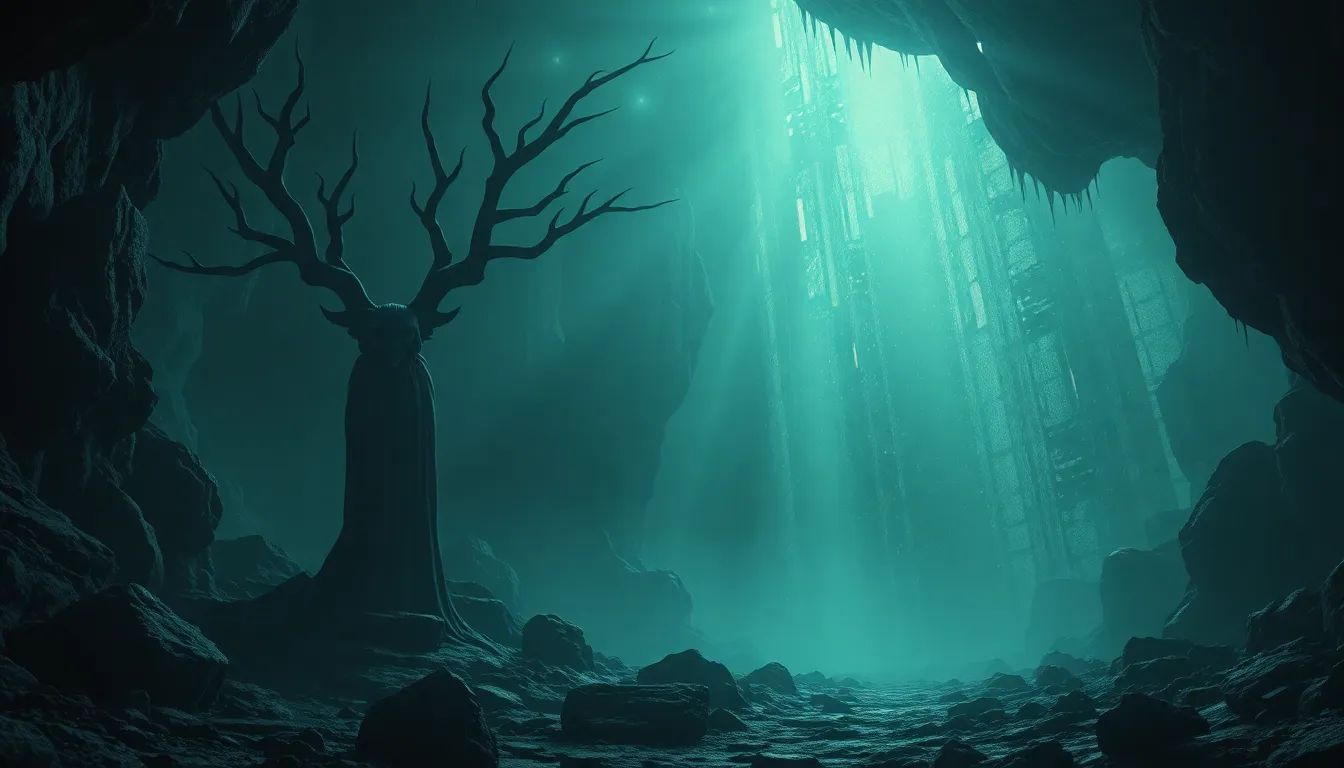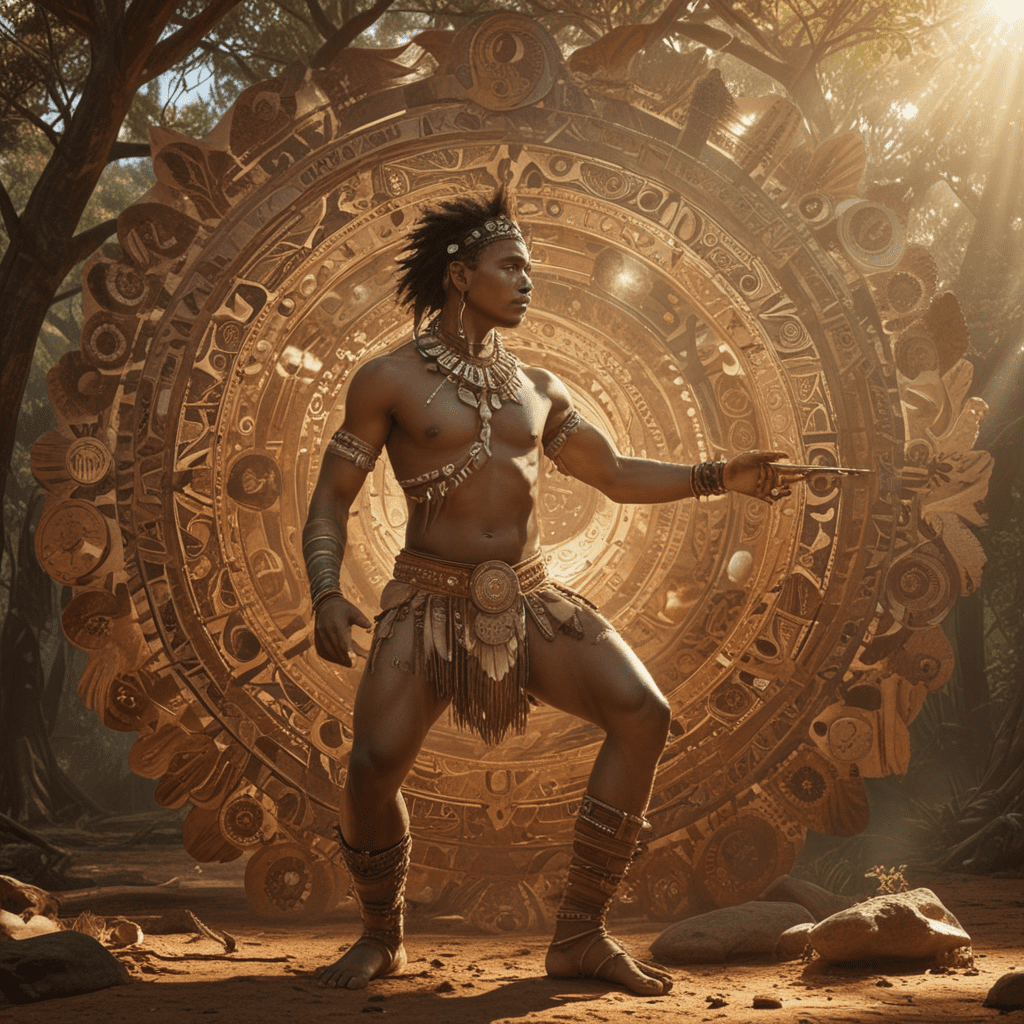The Role of Ancient Deities in Creation Myths: Stories of Origins
I. Introduction
Creation myths are foundational narratives that explain the origins of the world, humanity, and the cosmos. They serve to provide meaning and context to the human experience, offering insights into how different cultures understand their place in the universe.
Ancient deities play a crucial role in these narratives, often embodying the forces of nature, creation, and destruction. These divine beings not only influence the stories themselves but also reflect the values, beliefs, and practices of the cultures that worship them.
This article will explore various creation myths from different cultures, focusing on the roles of their respective deities in shaping these foundational tales. From the Mesopotamians to Indigenous peoples, the narratives reveal both unique and shared themes across human history.
II. Understanding Creation Myths
A. Definition and purpose of creation myths
Creation myths are traditional stories that explain how the universe and life began. They often serve several purposes:
- Providing a framework for understanding the world.
- Instilling a sense of identity and belonging within a culture.
- Offering moral guidance and lessons.
B. Common themes across different cultures
Despite the diversity of cultures, many creation myths share common themes, including:
- The emergence of order from chaos.
- The role of conflict in creation.
- The cyclical nature of life and death.
C. Functions of creation myths in society and belief systems
Creation myths often serve to:
- Explain natural phenomena.
- Legitimize social structures and hierarchies.
- Provide a sense of hope and continuity for communities.
III. The Concept of Deity in Ancient Cultures
A. Definition of deities in polytheistic beliefs
In polytheistic cultures, deities are often seen as powerful beings that govern various aspects of the universe. They can represent elements of nature, human traits, or abstract concepts.
B. The relationship between gods and humanity
The relationship between deities and humans can vary significantly:
- Some cultures view gods as benevolent protectors.
- Others see them as capricious forces that must be appeased.
C. The significance of divine beings in shaping worldviews
Deities often embody the values and beliefs of their cultures, influencing art, literature, and societal norms. They serve as models for human behavior and as explanations for the mysteries of existence.
IV. Mesopotamian Creation Myths
A. Overview of key deities (e.g., Marduk, Tiamat)
In Mesopotamian mythology, deities like Marduk and Tiamat play crucial roles in creation. Tiamat, often depicted as a primordial sea goddess, represents chaos, while Marduk symbolizes order and civilization.
B. The Enuma Elish: Creation through conflict
The Enuma Elish, the Babylonian creation epic, describes how Marduk defeats Tiamat in a cosmic battle and, from her remains, creates the world. This narrative emphasizes the theme of order emerging from chaos.
C. The role of deities in establishing order from chaos
In Mesopotamian beliefs, the establishment of order through divine intervention is a recurring theme, illustrating the importance of deities in maintaining cosmic balance.
V. Egyptian Creation Myths
A. Overview of key deities (e.g., Atum, Ra)
In ancient Egypt, deities such as Atum and Ra are central to creation myths. Atum is often credited with creating himself and subsequently giving birth to other gods, while Ra embodies the sun and is associated with life and rebirth.
B. The Heliopolitan Cosmogony: Creation from the primordial waters
The Heliopolitan creation myth describes how Atum emerged from the primordial waters of chaos (Nun) and created the world through thought and speech.
C. Symbolism of the sun god in the cycle of life and death
Ra’s daily journey across the sky symbolizes the cycle of life, death, and rebirth, reflecting the Egyptians’ understanding of the natural world and their spiritual beliefs.
VI. Hindu Creation Myths
A. Overview of key deities (e.g., Brahma, Vishnu)
In Hindu mythology, key deities such as Brahma (the creator), Vishnu (the preserver), and Shiva (the destroyer) represent the cyclical nature of the universe.
B. The Rigveda and the cosmic egg (Hiranyagarbha)
The Rigveda speaks of Hiranyagarbha, the golden cosmic egg from which the universe was born, symbolizing potential and the interconnectedness of life.
C. The cyclical nature of creation and destruction
Hindu creation myths emphasize the cyclical nature of existence, where creation and destruction are seen as two sides of the same coin, reflecting the belief in samsara (the cycle of birth, death, and rebirth).
VII. Greek Creation Myths
A. Overview of key deities (e.g., Chaos, Gaia, Uranus)
In Greek mythology, Chaos represents the void, while Gaia (Earth) and Uranus (Sky) are foundational deities from whom other gods emerge.
B. Theogony of Hesiod: Birth of gods and the world
Hesiod’s Theogony details the genealogy of the gods, illustrating how divine beings interact to shape the cosmos and establish order.
C. The role of Titans in shaping the cosmos
The Titans, descendants of Gaia and Uranus, play essential roles in the creation and subsequent order of the universe, reflecting themes of conflict and resolution.
VIII. Indigenous Creation Myths
A. Overview of various indigenous cultures (e.g., Native American, Aboriginal Australian)
Indigenous creation myths vary widely, with each culture offering unique perspectives on creation, often intertwined with their relationship to the land and nature.
B. The significance of nature and ancestral spirits
Many Indigenous creation myths emphasize the importance of nature and ancestral spirits, illustrating a deep connection to the earth and the belief that all life is sacred.
C. Oral traditions and their impact on cultural identity
Oral traditions play a vital role in preserving these myths, ensuring cultural continuity and identity among Indigenous peoples, as they pass down their knowledge through generations.
IX. Comparative Analysis of Deities in Creation Myths
A. Similarities and differences in narratives across cultures
A comparative analysis of creation myths reveals both similarities and differences in how various cultures perceive the divine and the act of creation. While many myths highlight the conflict between chaos and order, the specifics of the narratives can vary greatly.
B. Thematic elements: Chaos vs. order, conflict, and harmony
Many creation myths grapple with the duality of chaos and order, often portraying deities as agents who bring harmony out of discord. This reflects a universal human concern with the nature of existence.
C. The role of deities in shaping human understanding
Ultimately, ancient deities serve as symbols of humanity’s quest for understanding and meaning within the universe. Their stories provide insight into the values, fears, and aspirations of the cultures that revere them.



